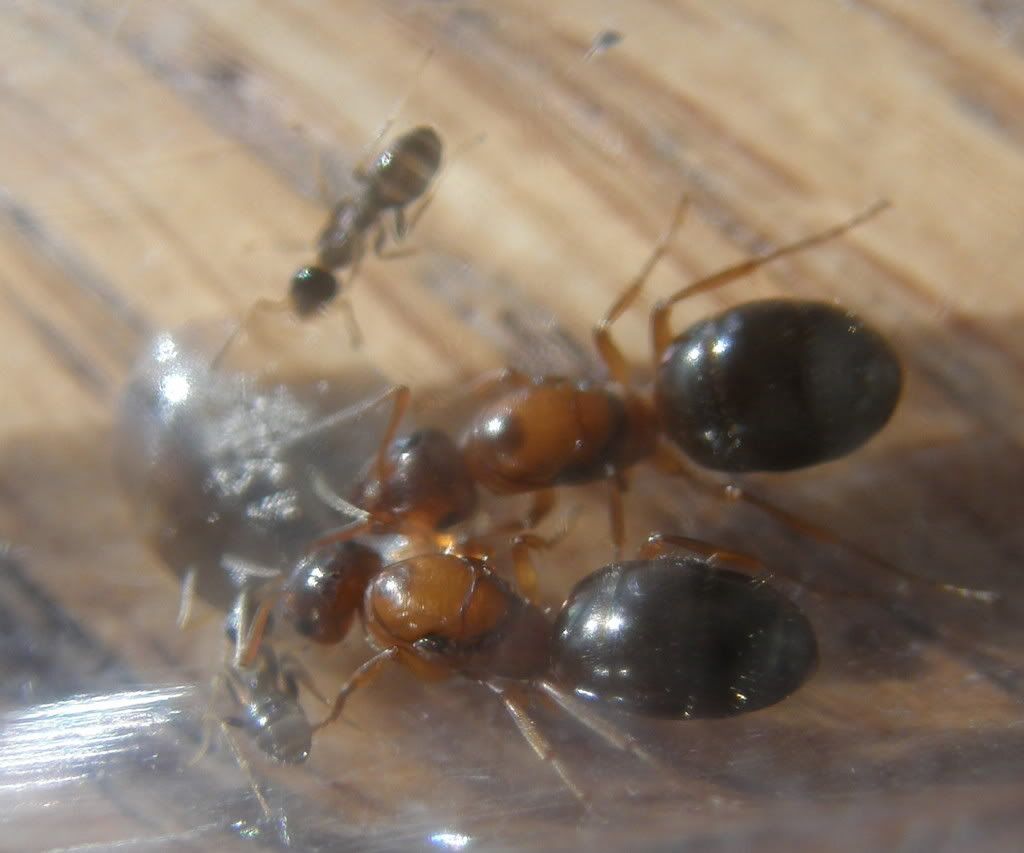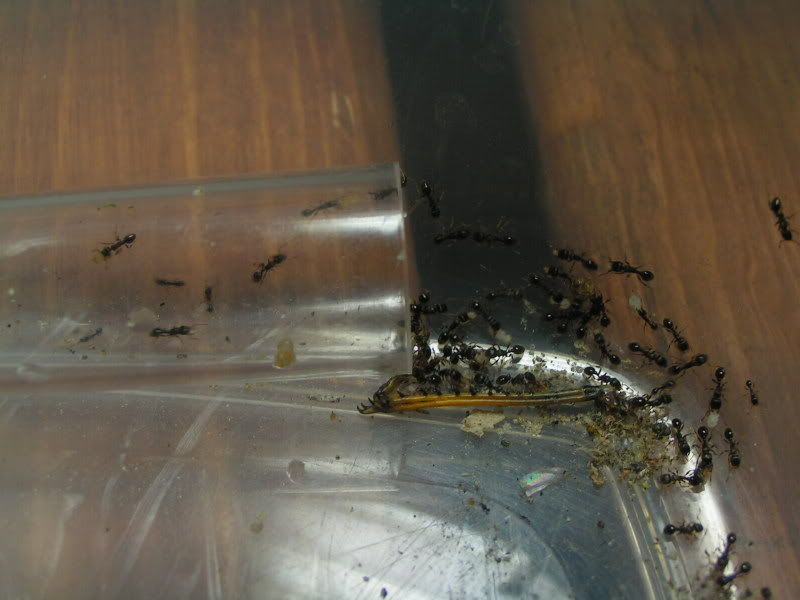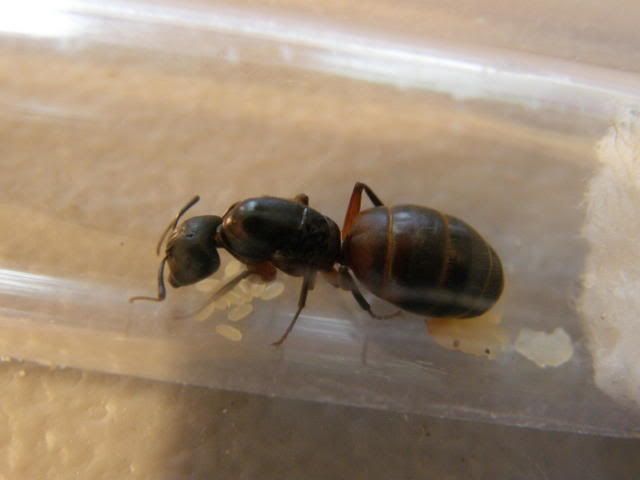- Joined
- Dec 16, 2006
- Messages
- 561
The inievitable thing will happen with an ant like C. penn, yes you can substitute the diet, but once the colony matures and starts producing alates is when you run into an issue (more workers means more majors, means more big ole ants). I dont have any photos, of allot of the old ant colonies I had, but I have a few that documented quite a bit. Ill just run you through how I dealt with my ant colonies, and you can pick and choose what works best for you.
I used test tube set ups... excellent IMO. Especially with ants like Camponotus pennsylvanicus, and formica speices.

(This right here is WHY you need to understand species names.) Some can found together, and start a colony stronger by working together. After about a year, (if the test tube hasnt dried out before then) you should set your ants up with a new one with a fresh cotton and reservoir.
You still have at least a year before you need a new formicarium (test tube set up wise) in all reality. You would be surprised at how shy first generation ants are. Might be some sort of survival instinct, or just lack of numbers unfamiliar space (im not sure). But they do fine until you hit ~ 10 workers with Camponotus. Then they need a container,

This is a young colony, in its container moving from one old test tube to a new one. These were obviously completely open test tubes. In the closed lid (sealed tight food container).
I don't have any photos of my set ups as a whole, and lost most of the good photos to the fire. (Long story, but I lost most my ants to a fire and have moved so often its just easier to wait on having ants. I might start up a colony this summer... life). But I digress
To summarize you can keep Camponotus in these test tubes, for the first year or so before they start needing more space (or again the cotton dries up).

I kept my T. caespitum in one of these plaster set ups I made.

Perfect example of a plaster formicarium IMO. basically a huge brick. It didn't move much. Hydrostone is much lighter. But the alternative is keeping them in smaller containers, and growing them up as Ive described (poorly). Once it gets difficult to feed them you know they are ready for a new container. So I would keep them in seal-able containers, with vasoline all over the top inch of the container's edges (if you dont have insectaslip). maybe punch some holes or make a few small vents in the plastic (after the vasoline or what ever barrier you use to keep the ants from them.
Please bear with me, I have more responses coming to answer your questions as best I can. I love discussing ants though. Especially trying to get new comers into it! I hope you keep in mind, this is My opinion. Their are a variety of other opinions, this is what works best for me! Its like math, there are allot of ways to solve the problem, what ever works best for you to get to the proper solution (You can always be wrong!). Ive just been very busy with the end of the semester.
-nepenthes
I used test tube set ups... excellent IMO. Especially with ants like Camponotus pennsylvanicus, and formica speices.

(This right here is WHY you need to understand species names.) Some can found together, and start a colony stronger by working together. After about a year, (if the test tube hasnt dried out before then) you should set your ants up with a new one with a fresh cotton and reservoir.
You still have at least a year before you need a new formicarium (test tube set up wise) in all reality. You would be surprised at how shy first generation ants are. Might be some sort of survival instinct, or just lack of numbers unfamiliar space (im not sure). But they do fine until you hit ~ 10 workers with Camponotus. Then they need a container,

This is a young colony, in its container moving from one old test tube to a new one. These were obviously completely open test tubes. In the closed lid (sealed tight food container).
I don't have any photos of my set ups as a whole, and lost most of the good photos to the fire. (Long story, but I lost most my ants to a fire and have moved so often its just easier to wait on having ants. I might start up a colony this summer... life). But I digress
To summarize you can keep Camponotus in these test tubes, for the first year or so before they start needing more space (or again the cotton dries up).

I kept my T. caespitum in one of these plaster set ups I made.

Perfect example of a plaster formicarium IMO. basically a huge brick. It didn't move much. Hydrostone is much lighter. But the alternative is keeping them in smaller containers, and growing them up as Ive described (poorly). Once it gets difficult to feed them you know they are ready for a new container. So I would keep them in seal-able containers, with vasoline all over the top inch of the container's edges (if you dont have insectaslip). maybe punch some holes or make a few small vents in the plastic (after the vasoline or what ever barrier you use to keep the ants from them.
Please bear with me, I have more responses coming to answer your questions as best I can. I love discussing ants though. Especially trying to get new comers into it! I hope you keep in mind, this is My opinion. Their are a variety of other opinions, this is what works best for me! Its like math, there are allot of ways to solve the problem, what ever works best for you to get to the proper solution (You can always be wrong!). Ive just been very busy with the end of the semester.
-nepenthes


